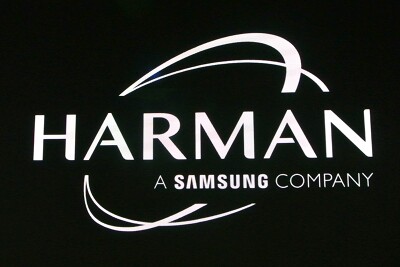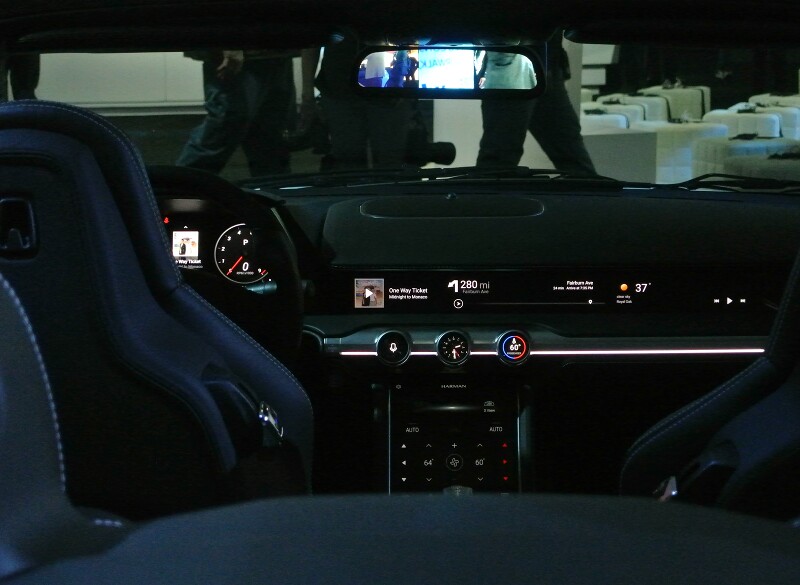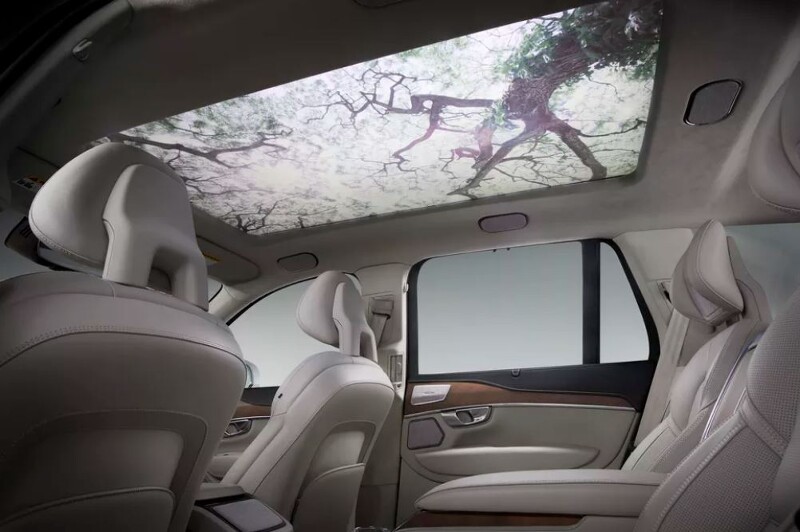Whenever one company merges with or devours another, it predicts that a cornucopia of synergistic value will result. More often than not, it doesn’t, but since Samsung completed its acquisition of Harman in March of last year, the companies have worked hard to combine Samsung’s display expertise with Harman’s knowledge of advanced automotive systems.

As seen at Harman’s by-invitation-only exhibit at the Hard Rock Hotel and Casino during CES, this cooperation has produced developmental systems incorporating OLED and local-dimming QLED displays, both separately and in combination. As Harman’s Tom Rivers put it, the company is bringing consumer electronics technology into automotive systems as it expands its advanced driver assist systems (ADAS)and security offerings. He also said Harman is “moving from device-centric to consumer-centric.”
On display was a Maserati with Harman 28″ QLED local-dimming infotainment display and OLED instrument cluster. Harman’s Rashmi Rao explained that for a high-end car like the Maserati, Harman selected the best-performing display technology for the critical cluster, while the large QLED display still offers very good performance at a significantly lower cost than OLED. Rao commented that the performance of the QLED is good enough that it does a good job of integrating visually with the OLED. A conventional LCD would present an obvious visual mismatch with the OLED. The system was fully functional but is not yet in a shipping automobile.
 Car by Maserati, display and control system by Harman, displays by Samsung. The instrument cluster is OLED, and the 28-inch infotainment display is a local-dimming QLED. (Photo: Ken Werner)
Car by Maserati, display and control system by Harman, displays by Samsung. The instrument cluster is OLED, and the 28-inch infotainment display is a local-dimming QLED. (Photo: Ken Werner)
Although Mobile Display Monitor focuses on displays, Harman and other Tier 1 suppliers were just as interested in the way their clusters and infotainment systems integrated with other systems. The Maserati system can customize interior lighting, integrate Bixby (and/or Alexa and Google), and can allow the driver to interrogate the car by voice. The system can check the owner’s schedule, check the dealer’s schedule, and set up a service appointment all through the voice interface. Other Tier 1 suppliers are also offering a similar feature.
Harman also showed a QLED instrument cluster and infotainment display integrated in a single unit for the Mini. Cluster and infotainment are driven by the same controller, which simplifies the system, reduces power consumption, and saves weight. The unit incorporates a smart surface beneath the display, and permits control from contextual knowledge and the steering wheel. The system integrates Android Automotive with the smart cluster and provides cordless phone charging. With this system, Harman is “revolutionizing the entry-level cockpit,” said Rao.
Harman designed this demonstration QLED cluster for the Mini to combine instrumentation (in the outer ring) and infotainment in the center. The user can change the infotainment part of the display but not the instrumentation part. The secondary display, showing a clock in the photo, changes content as the outside ring is turned. (Photo: Ken Werner)
Harman also used a QLED display for a concept it called a QLED MoodRoof, which part of an audio system called Moodscape. Moodscape is intended to provide a multi-sensory environment that will keep you relaxed (or stimulated) while your autonomous car of the future drives itself to your destination. — Ken Werner
 The QLED Moodroof, a concept, changes the displayed content along with audio the sound system. The intended application is autonomous vehicles. (Photo: Harman)
The QLED Moodroof, a concept, changes the displayed content along with audio the sound system. The intended application is autonomous vehicles. (Photo: Harman)

